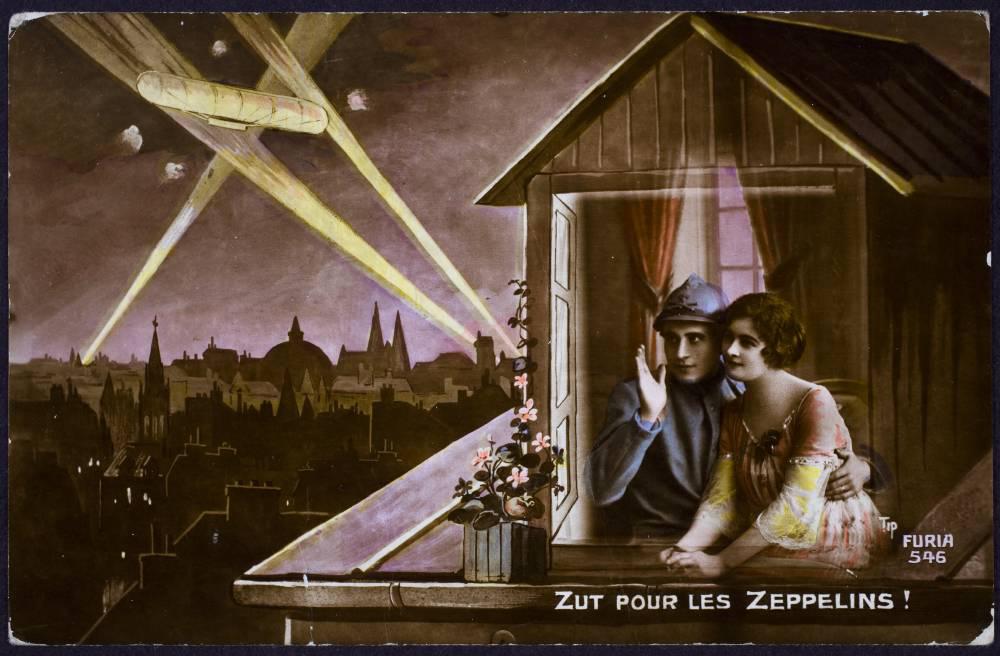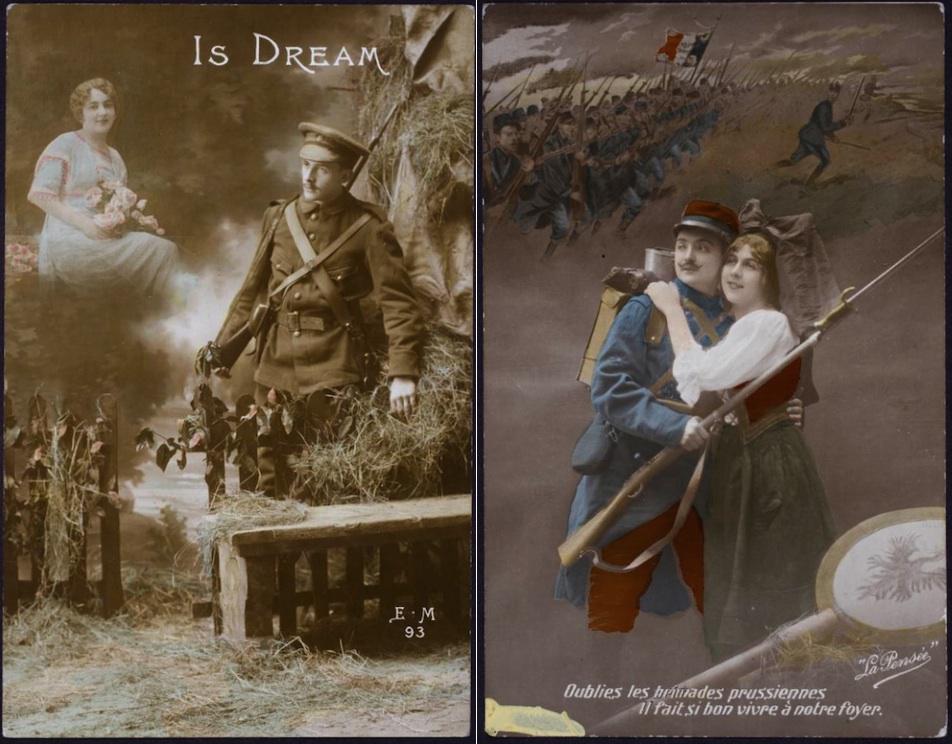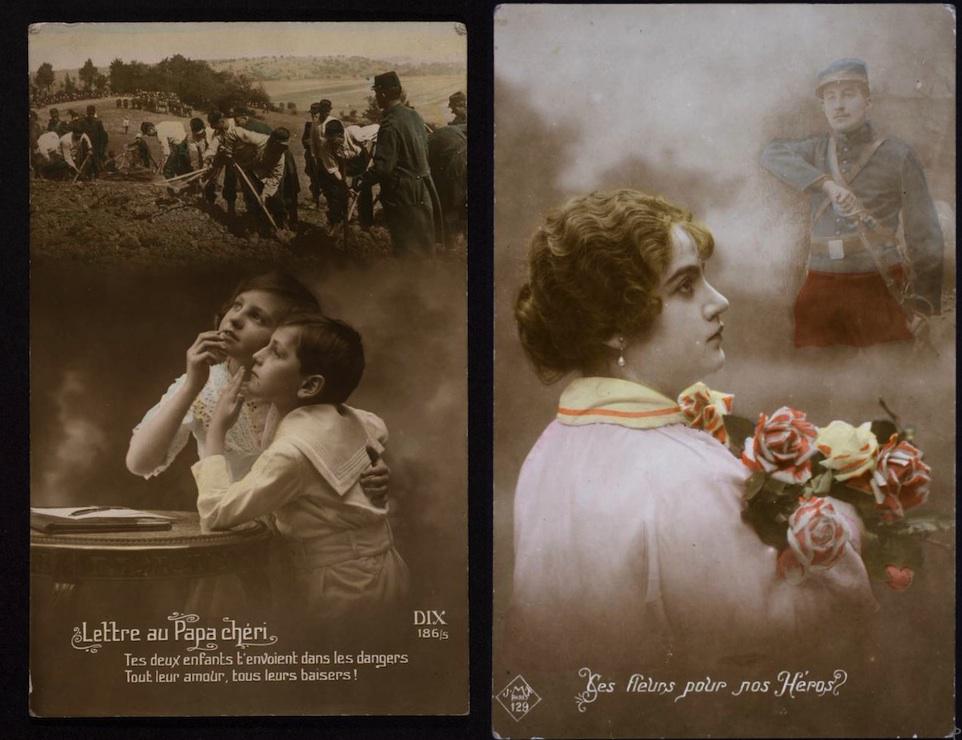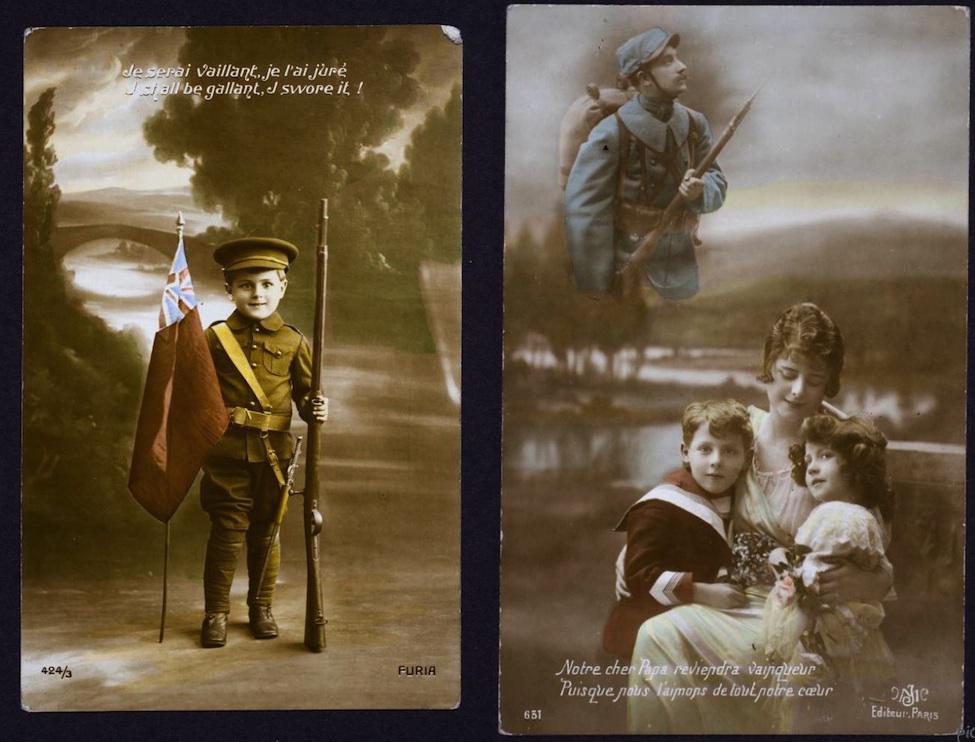The Vault is Slate’s history blog. Like us on Facebook, follow us on Twitter @slatevault, and find us on Tumblr. Find out more about what this space is all about here.
These brightly colored postcards, sent by French families and soldiers during World War I, are part of a set of similar cards available on Flickr from the George Eastman House. Because sending postcards to soldiers was postage-free during the conflict, the cards were mass-produced in great quantity and variety. Imagery offered solace and urged staunch resolve.
Historian William A. Christian writes that many French wartime postcards borrowed from a religious visual language established before the war. Imagery in the Catholic press, Christian says, often depicted religious visions appearing in everyday life. The postcards tapped these previously established conventions, often featuring a scene of war at the top of the frame, while the scene of home occupied the bottom.
These composite images, Christian writes, “helped bridge the gap (visually, and through the mail) between home and soldiers,” while “capturing … the presence of the war in people’s minds and anxieties.”

George Eastman House Collection.
“To Heck With the Zeppelins” (rough translation): This image, printed ca. 1915, juxtaposes a gently smiling couple with a zeppelin advancing on their city. Since the Germans used zeppelins for strategic bombing in France and England during World War I, the message may have been a lighthearted attempt to minimize the psychological threat of bombs from above. The man is in uniform, circling the woman with his arm as if to offer symbolic protection.

George Eastman House Collection.
L: “Is Dream” (possibly “His Dream”), ca. 1915. Some of the postcards in the Eastman collection are in English as well as French—a way for postcard sellers to capitalize on the presence of English troops who might also want to send a card home. R: “Forget the bullying Prussians/It is good to live in our home” (ca. 1915). This card, helpful Flickr commenter Antoine Fleury explains, refers to the French desire to regain control of the territories of Alsace and Lorraine, which they had lost to Germany in 1871, after the Franco-German War. The girl in the image wears an Alsatian costume, and the motto refers to the anticipated transfer.

George Eastman House Collection.
L: “Letter to our dear Father: Your two children send you, amid the dangers/All their love, all their kisses” (date unknown). Christian writes that the wide array of available scenes meant that a family could search for a card that featured the correct number, age, and gender of children. Here, a trench-digging scene dominates the children’s thoughts. R: “Flowers for our heroes” (ca. 1915).

George Eastman House Collection.
L: “I shall be gallant, I swore it!” (ca. 1917) An instance of a postcard in French and English. R: “Our dear Papa will return a conqueror/since we love him with all our hearts” (ca. 1915).

George Eastman House Collection.
“To Victory” (ca. 1915). The composition brings marching soldiers together with the interior of a French home, while a dramatically posing woman holding flowers looks on from safety.